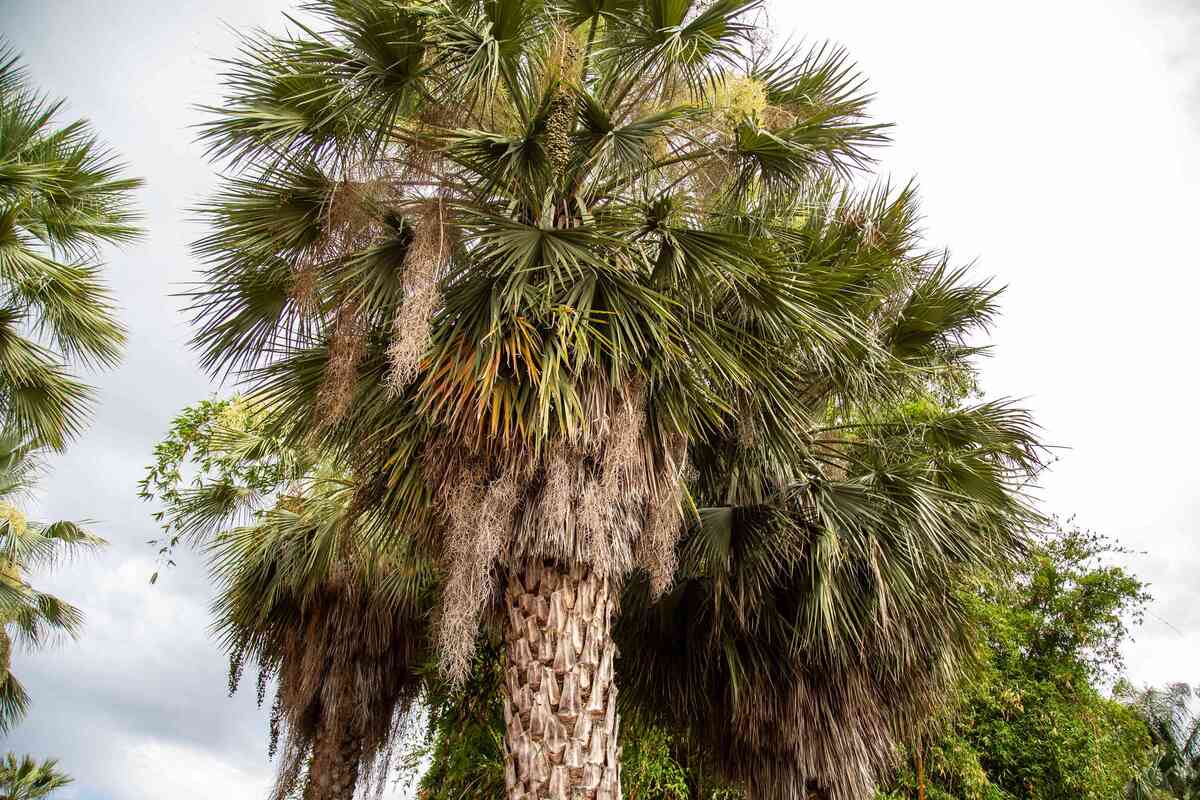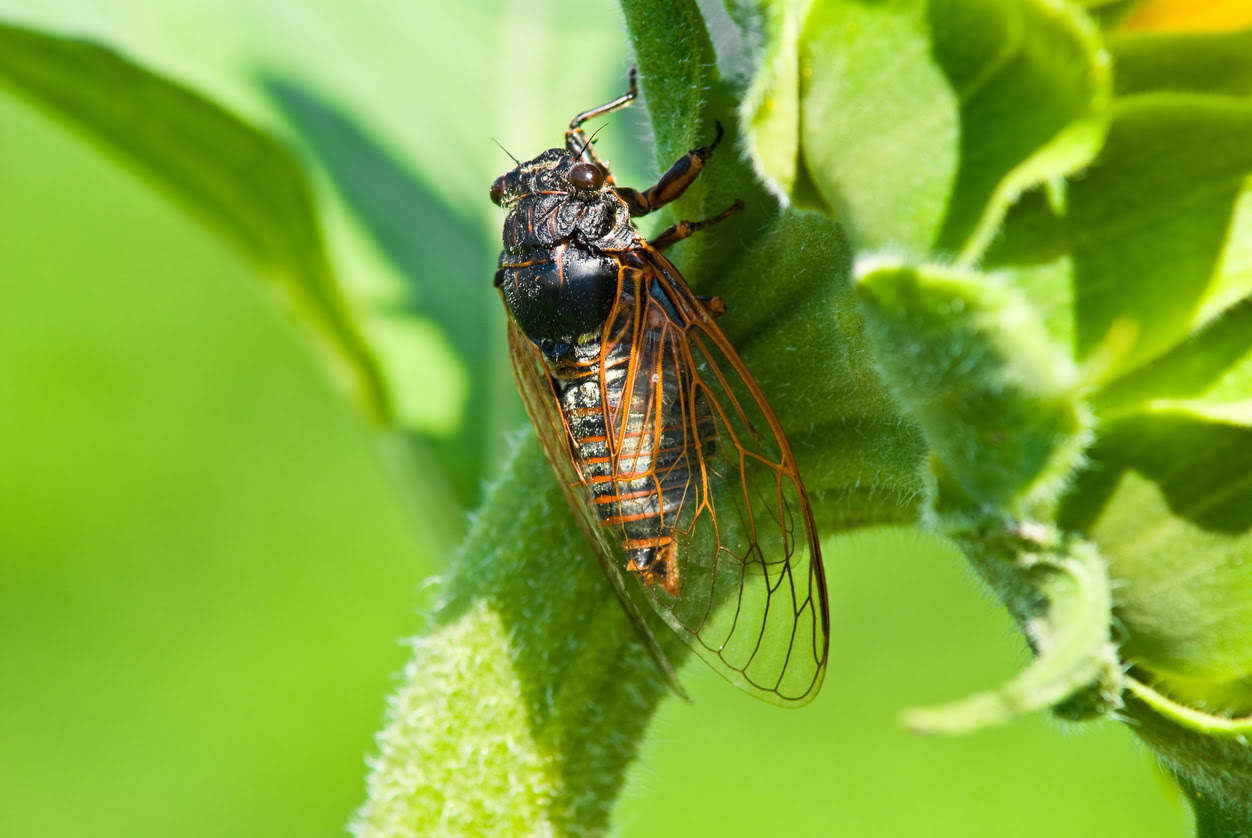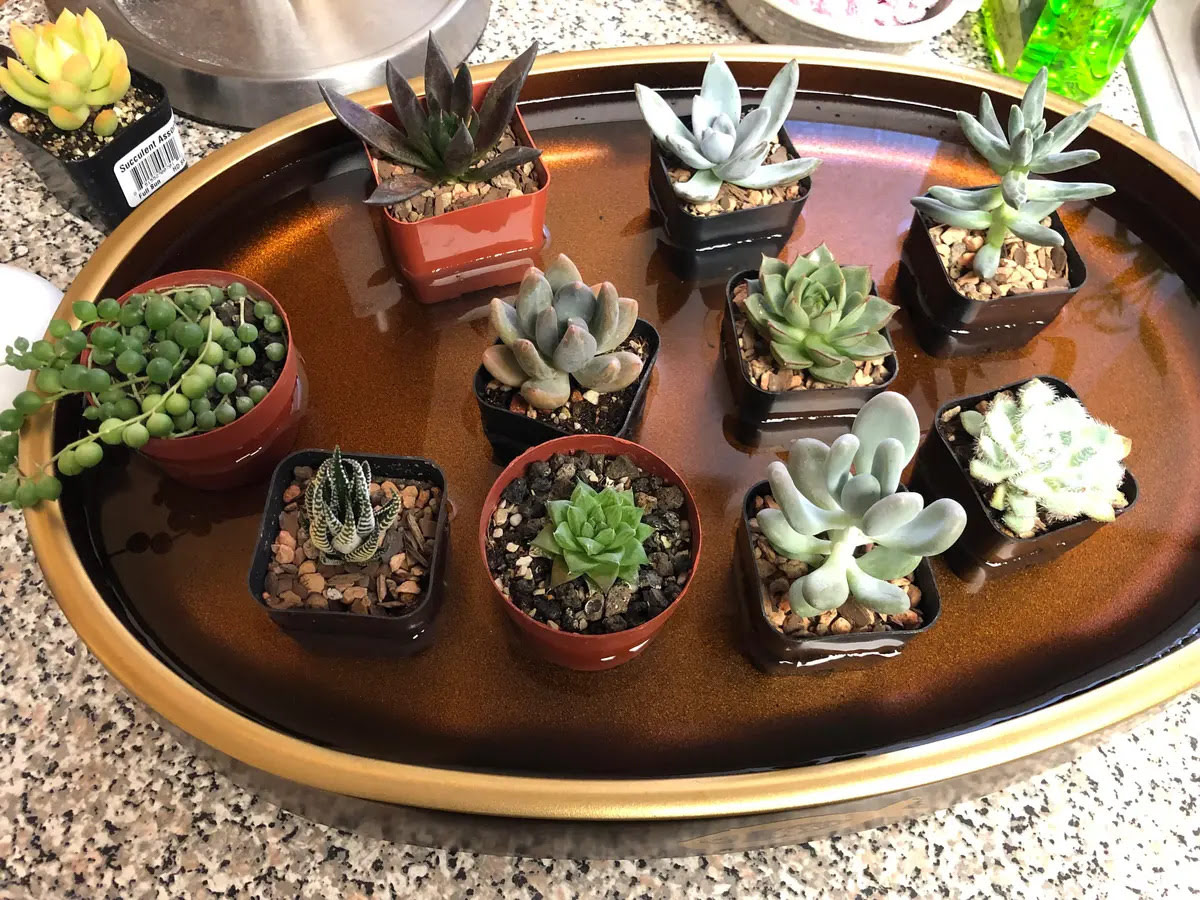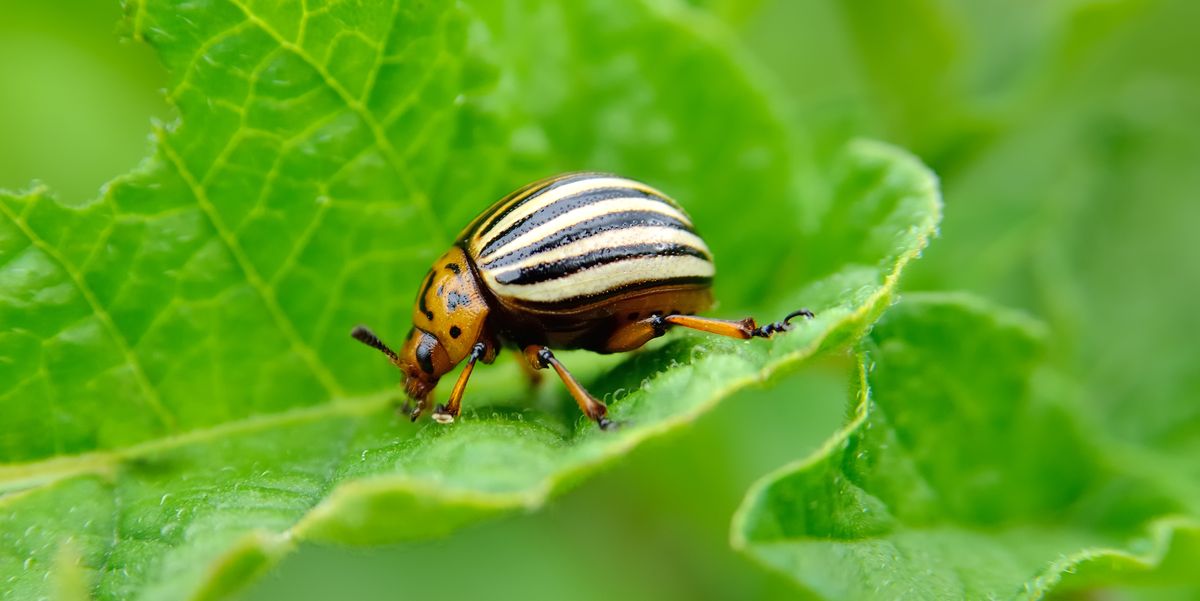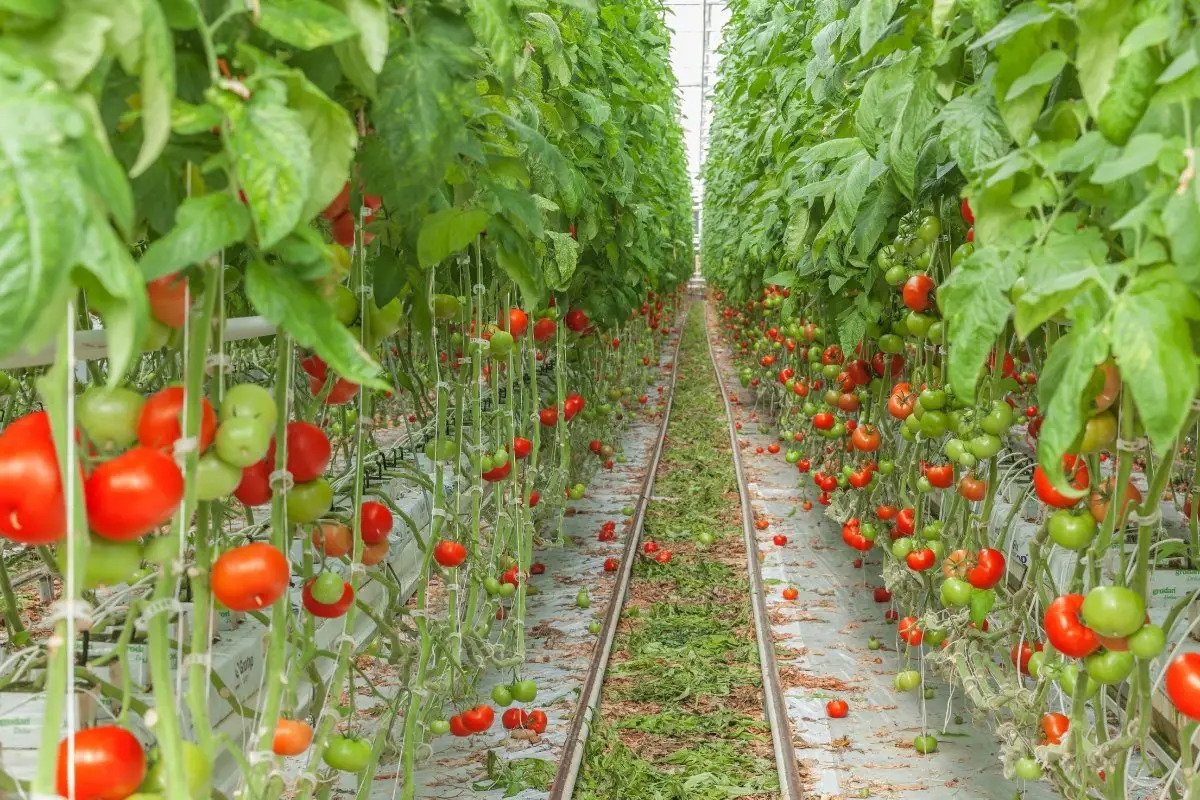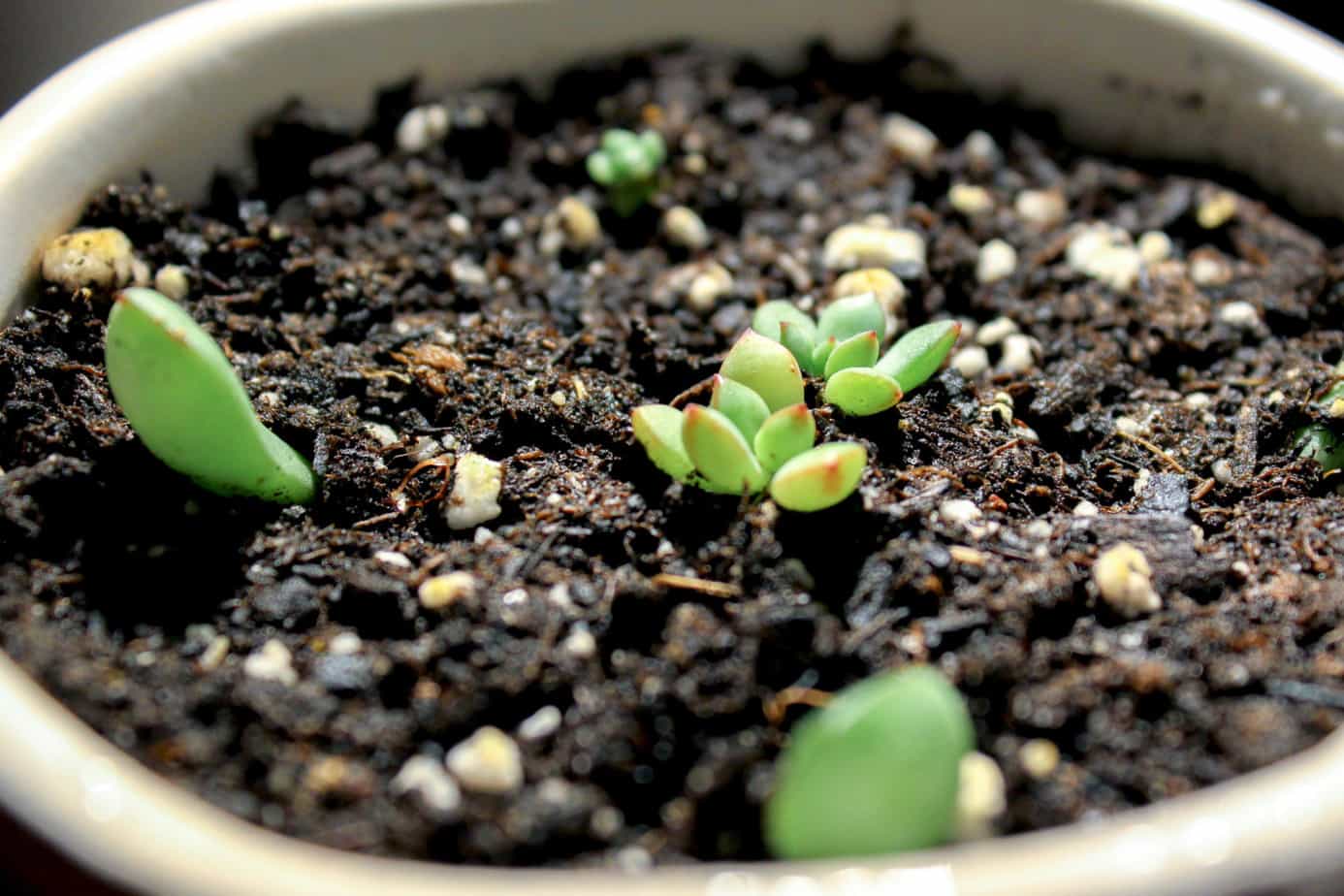Home>Types of Gardening>Ornamental Gardening>How Long Do Succulents Live
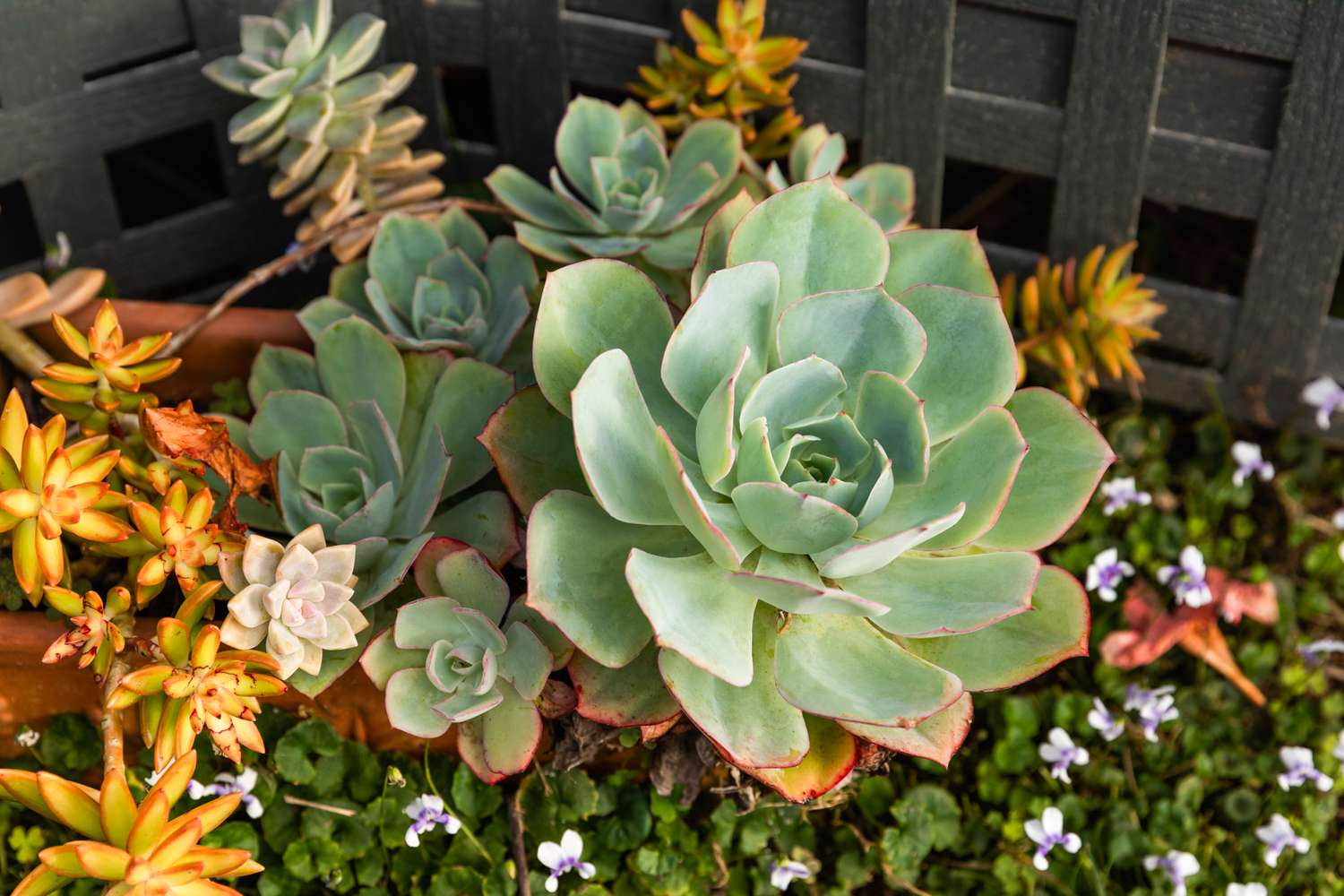

Ornamental Gardening
How Long Do Succulents Live
Modified: February 9, 2024
Discover the lifespan of succulents in ornamental gardening. Learn how long succulents live and how to care for these popular plants.
(Many of the links in this article redirect to a specific reviewed product. Your purchase of these products through affiliate links helps to generate commission for Chicagolandgardening.com, at no extra cost. Learn more)
Table of Contents
- Introduction
- Factors Affecting the Lifespan of Succulents
- Environmental Conditions and Care Requirements
- The Importance of Proper Watering Techniques
- Understanding the Impact of Temperature and Sun Exposure
- Disease and Pests: Preventing and Treating Common Issues
- Reproduction and Propagation of Succulents
- Common Types of Succulents and Their Average Lifespan
- Tips for Prolonging the Lifespan of Succulents
- Conclusion
Introduction
Welcome to the world of succulents! These remarkable plants have gained immense popularity due to their unique beauty and low maintenance requirements. Whether you are a seasoned gardener or just starting out, succulents are a fantastic addition to any garden or indoor space. One of the most common questions that arise when it comes to succulents is how long they live.
Succulents are known for their ability to store water in their fleshy leaves and stems, making them highly adaptable to arid environments. This natural adaptation allows succulents to survive in harsh conditions where other plants would wither and die. However, the lifespan of a succulent can vary depending on several factors.
In this article, we will explore the factors that affect the lifespan of succulents and provide useful tips on how to prolong their longevity. Whether you are a beginner or an experienced gardener, understanding the lifespan of succulents is crucial for their successful growth and maintenance.
So, if you are ready to delve into the captivating world of succulents and learn more about their lifespan and care requirements, let’s dive in!
Factors Affecting the Lifespan of Succulents
The lifespan of succulents, like any other plant, can be influenced by various factors. Understanding these factors will help you provide the best care for your succulents and ensure their longevity. Let’s explore some of the key factors that can affect the lifespan of succulents:
- Species and genetics: Different succulent species have varying lifespans. Some succulents, such as Agave and Yucca, can live for several decades, while others may only last a few years. Additionally, the genetics of a succulent can play a role in its lifespan. Some succulents are naturally predisposed to live longer, while others may have a shorter lifespan.
- Care and maintenance: Proper care and maintenance are crucial for the health and longevity of succulents. Factors such as correct watering techniques, suitable soil, and the right amount of sunlight can significantly impact a succulent’s lifespan. Neglecting these care requirements can lead to poor growth, diseases, and even death.
- Environmental conditions: The environment in which succulents are grown can greatly affect their lifespan. Succulents thrive in well-draining soil and require sufficient airflow. Exposure to extreme temperatures, such as frost or intense heat, can lead to damage and shorten the plant’s lifespan. It’s essential to provide a suitable climate for your succulents to ensure their longevity.
- Watering habits: Overwatering or underwatering can have detrimental effects on succulents. These plants are adapted to periods of drought and prefer to be slightly dehydrated rather than overwatered. Proper watering habits, such as a thorough soak followed by allowing the soil to dry out, will promote healthy root growth and enhance the succulent’s lifespan.
- Disease and pests: Succulents can be susceptible to various diseases and pests, such as root rot, fungal infections, and mealybugs. These issues can weaken the plant and ultimately lead to its demise. Regular monitoring, proper hygiene practices, and the use of organic pest control methods can help prevent and treat common succulent ailments, thus prolonging their lifespan.
By considering these factors and implementing the appropriate care practices, you can significantly increase the lifespan of your succulents. Each factor has a synergistic effect on the overall health and vitality of the plant, ensuring that you enjoy their beauty for years to come.
Environmental Conditions and Care Requirements
The environmental conditions in which succulents are grown, along with their care requirements, play a vital role in determining their lifespan. Let’s delve into some key aspects to consider:
- Sunlight: Succulents thrive in bright, indirect sunlight. They require several hours of sunlight each day to maintain their colorful and compact forms. However, intense and prolonged exposure to direct sunlight can lead to sunburn and damage the plants. It’s crucial to find a balance and provide adequate sun exposure based on the specific needs of your succulents.
- Temperature: Succulents are known for their ability to tolerate a wide range of temperatures. However, extreme heat or cold can be detrimental to their health. It’s important to protect succulents from frost during the winter months and provide shade or shelter during scorching summer days.
- Soil and drainage: Succulents require well-draining soil to prevent waterlogged roots, which can lead to root rot. A mixture of porous materials such as perlite, pumice, or coarse sand can help ensure proper drainage. Avoid using regular potting soil, as it tends to retain moisture and can suffocate the plant’s roots.
- Watering: Succulents have low water requirements due to their unique ability to store water in their leaves and stems. It’s important to strike a balance between underwatering and overwatering. A general rule of thumb is to allow the soil to dry out completely between waterings. Avoid leaving the plant sitting in water as it can lead to root rot.
- Fertilization: Succulents have relatively low nutrient requirements. Using a balanced fertilizer diluted to half strength once or twice a year during the growing season can provide the necessary nutrients. Be cautious not to overfertilize, as it can lead to rapid but weak growth.
- Container selection: Choosing the right container is important for the overall health of succulents. Opt for containers with drainage holes to prevent water accumulation at the bottom. This promotes proper airflow and prevents the roots from sitting in stagnant water.
Understanding and providing the proper environmental conditions and care requirements for succulents will help ensure their longevity. By creating a suitable habitat, you can enjoy the beauty of these unique plants for many years.
The Importance of Proper Watering Techniques
Proper watering techniques are paramount to the health and longevity of your succulents. Due to their unique water-storing abilities, succulents have different watering requirements compared to other plants. Let’s delve into the importance of proper watering techniques:
Avoid overwatering: One of the most common pitfalls when caring for succulents is overwatering. Succulents are adapted to arid environments with periods of drought. Overwatering can lead to root rot, as the excess moisture causes the roots to become soggy and prone to fungal infections. It’s important to allow the soil to dry out completely between waterings.
Water deeply but infrequently: When you do water your succulents, it’s crucial to provide a thorough soak. Water the plant until water drains out from the bottom of the container, ensuring that the entire root zone is adequately hydrated. However, do not water again until the soil has dried out completely. This mimics their natural habitat and promotes the development of a healthy root system.
Observe the signs of dehydration: Succulents have unique ways of showing when they need water. Look for signs such as shriveled or wrinkled leaves, leaf drop, or a duller color. These are indications that the plant is beginning to experience dehydration and needs to be watered. However, it’s important to note that different succulent species have different water requirements, so it’s essential to research the specific needs of your succulent.
Consider the climate and season: The watering needs of succulents can vary depending on the climate and season. During the hotter months, succulents may require more frequent watering due to increased evaporation. On the other hand, in cooler months or during dormancy, succulents need less water as they are not actively growing. Adjust your watering schedule accordingly to accommodate the changing needs of your succulents.
Avoid spraying the leaves: When watering your succulents, it’s best to direct the water towards the soil rather than spraying the leaves. Succulents are prone to rot when water collects in their leaf axils or central rosettes. Watering at the base of the plant ensures that the roots receive the necessary moisture without causing harm to the foliage.
By following proper watering techniques, you can prevent the common issues associated with overwatering and promote healthy growth in your succulents. Remember, it’s better to slightly underwater than to overwater these drought-tolerant plants.
Understanding the Impact of Temperature and Sun Exposure
Temperature and sun exposure have a significant impact on the health and lifespan of succulents. As desert dwellers, succulents have adapted to thrive in arid environments with specific temperature and sunlight requirements. Let’s explore how these factors affect succulents:
Temperature: Succulents exhibit a range of temperature tolerances depending on their species and origin. Most succulents prefer temperatures between 60°F to 80°F (15°C to 27°C). Extreme heat or cold can cause damage to their cells, leading to discoloration, wilting, or even death. It’s essential to provide adequate protection during periods of intense heat or frost, ensuring that they remain within their optimal temperature range.
Sun exposure: Succulents are known for their love of sunlight, but the intensity and duration of exposure can impact their health. Ideally, succulents thrive in bright, indirect sunlight. However, prolonged exposure to direct sunlight, especially during the hottest parts of the day, can cause sunburn and scorch the plant’s leaves. It’s essential to find a balance and provide partial shade or filtered sunlight for succulents that are sensitive to intense sun exposure.
Acclimation: When transitioning succulents to a new environment with different light and temperature conditions, it is crucial to acclimate them gradually. Sudden changes in these factors can shock the plants and lead to stress or damage. Gradually expose the succulents to increased amounts of sunlight or adjust the temperature over a period of weeks to allow them to adjust and thrive in their new surroundings.
Seasonal changes: Succulents also respond to seasonal changes, adjusting their growth and water requirements accordingly. During the warmer months of spring and summer, succulents experience active growth and may require more frequent watering. In contrast, during the cooler months of fall and winter, succulents enter a period of dormancy where their growth slows down, and water requirements decrease. It’s important to observe and adjust your care routine accordingly to support the succulents’ natural cycles.
Indoor vs. outdoor conditions: When growing succulents indoors, it’s crucial to provide them with adequate sunlight. Placing them near a south-facing window or using grow lights can help ensure they receive sufficient light. Outdoor succulents should be placed in areas that provide the right balance of sun exposure and protection from extreme weather conditions.
Understanding the impact of temperature and sun exposure on succulents is essential to their well-being. By providing the optimal conditions for your succulents, you can help them thrive and enjoy their beauty for years to come.
Disease and Pests: Preventing and Treating Common Issues
Like any other plants, succulents can be susceptible to diseases and pests. However, with proper preventive measures and timely treatment, you can keep your succulents healthy and thriving. Let’s explore some common issues and ways to prevent and treat them:
Root rot: Overwatering and poorly draining soil can lead to root rot, which is a common issue among succulents. To prevent root rot, ensure that the soil is well-draining and avoid leaving your succulents in standing water. Water only when the soil is completely dry, and remove any excess water from the saucer or container.
Leaf spots and fungal infections: Succulents can be susceptible to leaf spots caused by fungal infections. These spots may appear as discolored, water-soaked areas on the leaves. To prevent fungal infections, avoid overhead watering as it can promote moisture on the leaves. Ensure good air circulation around the plants and remove any infected leaves promptly.
Mealybugs and spider mites: Mealybugs and spider mites are common pests that can infest succulents. These pests can cause damage by sucking the sap from the plant, leading to discoloration, wilting, and stunted growth. Regularly inspect your succulents for signs of infestation, such as cottony webbing or tiny insects. Use natural pest control methods like rubbing alcohol or insecticidal soap to treat the affected plants.
Scale insects: Scale insects are another common pest that can affect succulents. They appear as small, shield-shaped bumps on the leaves and stems. These pests feed on the sap of the plant, causing yellowing, wilting, and leaf drop. To treat scale insects, gently scrape them off the plant using a soft brush or cloth. If the infestation is severe, consider using a horticultural oil or insecticide labeled for scale control.
Preventive measures: To minimize the risk of disease and pest infestation, it’s important to practice good hygiene and preventive measures. Start with healthy plants from reputable sources, as this reduces the chances of introducing pests or diseases. Quarantine new plants for a few weeks to ensure they are pest-free. Regularly inspect your succulents for any signs of disease or pests, and take prompt action if you notice any issues.
Natural remedies: There are several natural remedies you can use to control pests and mildew on succulents. Neem oil, diluted garlic spray, or a mixture of water and dish soap can be effective in treating and preventing infestations. Additionally, introducing beneficial insects like ladybugs can help control pests naturally.
By practicing good preventive measures and promptly treating any issues that arise, you can keep your succulents healthy and pest-free. Regular monitoring and providing optimal growing conditions will ensure that your succulents thrive and remain beautiful additions to your garden or indoor space.
Reproduction and Propagation of Succulents
One of the fascinating aspects of succulents is their ability to reproduce and propagate. Propagation allows you to expand your succulent collection, share plants with friends and family, and create new arrangements. Let’s explore some common methods of succulent reproduction and propagation:
Offsets or pups: Many succulents produce offsets or pups, which are miniature versions of the parent plant that grow alongside the main plant. These offsets can be gently separated from the parent plant once they have developed their own roots and leaves. Plant them in well-draining soil, provide the appropriate care, and watch them grow into independent succulents.
Leaf cuttings: Succulents like Echeveria, Sedum, and Crassula can be propagated from leaf cuttings. Simply remove a healthy leaf from the plant, allow the cut end to callus over for a few days, and then place the leaf on well-draining soil. After some time, new roots will develop along the cut edge, and a new plant will emerge from the base of the leaf.
Stem cuttings: Some succulents, such as Jade plants (Crassula ovata) and Christmas Cacti (Schlumbergera), can be propagated from stem cuttings. Take a cutting from the stem of the parent plant, remove the lower leaves, and allow the cut end to callus over. Plant the cutting in a well-draining soil mix and provide the appropriate care to encourage root development.
Division: Some succulents, like Aloe and Agave, can be divided by separating the offsets or pups from the main plant. Carefully lift the parent plant from its container, gently separate the offsets, and replant each division in its own container. Provide appropriate care and allow time for the divisions to establish their roots.
Seed propagation: Although slower than other methods, succulents can also be grown from seeds. Collect seeds from mature succulent plants and sow them in a well-draining soil mix. Keep the soil lightly moist and provide warmth and bright, indirect light. With patience and care, the seeds will germinate, and new succulents will begin to grow.
Experimentation and exploration are part of the joy of propagating succulents. Each method has its own requirements and results, and it can be fulfilling to see new plants emerge and thrive. Remember to adjust your care routine according to the specific needs of the propagated plants and enjoy the journey of cultivating new succulents.
Common Types of Succulents and Their Average Lifespan
Succulents come in a wide variety of shapes, sizes, and colors, each with its own unique characteristics and lifespan. While the lifespan of succulents can vary based on care, environmental factors, and specific species, here are some common types of succulents and their average lifespans:
Sempervivum (Hens and Chicks): These rosette-forming succulents are known for their ability to produce offsets, or “chicks,” around the main plant, called the “hen.” Sempervivums are hardy plants that can live up to 10 years or more, depending on the species and care they receive.
Echeveria: Echeverias are popular succulents with rosette-shaped leaves in various colors and textures. With proper care, Echeverias can live for several years, often reaching a lifespan of 5 to 15 years or even longer. Some species may even produce offsets or pups, allowing for propagation and the extension of their lifespan.
Aloe Vera: Aloe Vera is a well-known succulent that is cherished for its medicinal properties. With proper care, Aloe Vera can live for 15 to 25 years or more. These succulents are known to produce offsets or “pups,” which can be separated and grown into new plants, ensuring a continuous cycle of life.
Agave: Agaves are majestic succulents with striking architectural forms. These plants typically have a lifespan of 10 to 30 years, with some species living even longer. Some Agave species, such as Agave americana, have a unique growth habit where they produce a large central inflorescence, or flower spike, before dying. However, they often produce numerous offsets or “pups” before reaching the end of their life cycle.
Crassula: Crassulas are diverse succulents that come in various shapes and sizes. From the popular Jade Plant (Crassula ovata) to the Crassula perforata, these succulents can live for 10 to 20 years or more. With their ability to propagate easily from leaf or stem cuttings, you can continue to enjoy these succulents for generations.
Sedum: Sedums, also known as stonecrops, are hardy succulents with fleshy leaves and vibrant flowers. These plants have a lifespan of around 10 to 20 years, depending on the species and growing conditions. With their easy propagation methods, Sedums offer the opportunity to create new plants and extend their lifespan in your garden.
It’s important to note that the lifespan of succulents can be influenced by various factors, including care, growing conditions, and specific species. Providing optimal care, including proper watering, suitable light exposure, and well-draining soil, can help extend the life of your succulents and ensure they thrive for many years to come.
Tips for Prolonging the Lifespan of Succulents
To ensure the long and healthy life of your succulents, consider the following tips and practices:
1. Provide well-draining soil: Succulents require soil that allows excess water to flow through easily. Use a well-draining soil mix specifically formulated for succulents or create your own by combining potting soil with perlite or coarse sand.
2. Water sparingly: Avoid overwatering your succulents, as this can lead to root rot. Allow the soil to dry out completely between waterings, and water deeply and thoroughly when you do. Remember, it’s better to slightly underwater than to overwater succulents.
3. Use a watering schedule: Establish a consistent watering schedule based on the needs of your succulents and the climate you live in. This will help prevent both underwatering and overwatering and promote healthy growth.
4. Provide proper sunlight: Succulents generally thrive in bright, indirect sunlight. Place your succulents near a south or east-facing window or outdoors in a location that receives adequate sunlight while providing protection from intense midday sun, especially during summer months.
5. Avoid extreme temperatures: Protect your succulents from extreme temperatures. Most succulents prefer temperatures between 60°F to 80°F (15°C to 27°C). Provide shelter or bring them indoors during freezing temperatures or heatwaves.
6. Keep good airflow: Succulents benefit from good air circulation, which helps prevent the growth of fungal diseases. Avoid overcrowding your succulents, especially when placed indoors, and ensure adequate space between plants.
7. Use appropriate containers: Choose containers with drainage holes to prevent water from pooling at the bottom. This ensures proper drainage and helps prevent root rot. Additionally, using containers made of porous materials such as terracotta can aid in moisture regulation.
8. Prune and clean: Regularly remove dead or dying leaves, stems, or flowers from your succulents to promote better airflow and reduce the risk of pest and disease infestations. Keep your succulents clean by gently wiping the leaves to remove dust and debris.
9. Provide occasional fertilizer: While succulents generally have low nutrient needs, they can benefit from a diluted, balanced fertilizer during the growing season. Apply the fertilizer sparingly and follow the package instructions to avoid overfertilization.
10. Regularly inspect for pests: Monitor your succulents for signs of pest infestations such as mealybugs, scale insects, or spider mites. Early detection and prompt treatment can help prevent the spread of pests and minimize damage to your succulents.
By following these tips and providing attentive care, you can significantly prolong the lifespan of your succulents. Enjoy the beauty of these captivating plants as they thrive and grow in your garden or indoor space.
Conclusion
Succulents are extraordinary plants that bring beauty and charm to any garden or indoor space. Understanding the factors that affect their lifespan and implementing proper care techniques is vital for their health and longevity. By considering environmental conditions, providing appropriate watering techniques, monitoring for pests and diseases, and practicing propagation methods, you can ensure your succulents thrive and flourish for years to come.
Remember to consider the specific needs of each succulent species, as different types may require different care approaches. Research the individual requirements of your succulents to provide the optimal conditions for their growth and development.
Whether you choose to grow Sempervivum with their charming chicks or enjoy the vibrant colors of Echeveria, the world of succulents offers endless possibilities for creativity and personal enjoyment. From propagation techniques to caring for mature plants, the journey of succulent gardening is filled with excitement and rewards.
So, embrace the adventure, experiment with different care methods, and let your succulents thrive. With a bit of knowledge and attentive care, you can create a beautiful oasis of succulents that will bring you joy and admiration for many years to come.

